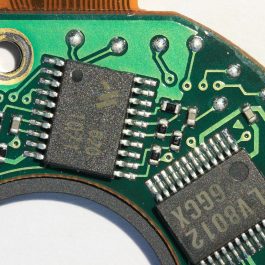
PCB assembly services have been arguing the benefits and drawbacks of through-hole vs. surface mount technologies since the 1980s. Through-hole technology (THT) is the original assembly process that dominated the industry until the invention of surface mount technology (SMT) in the 80’s. Surface mount is more efficient and cost-effective than THT, leading many to believe THT would fade into obscurity. However, through-hole technology offers specific benefits that keep it relevant even into the foreseeable future.
Through-Hole Technology (THT)
Advantages: The bonds created between THT components and the board are far stronger than SMT bonds, making THT the ideal choice for components that will undergo mechanical and environmental stress or high heat, such as connectors and transformers. THT components are also easy to swap out, making them perfect for prototypes and testing.
Disadvantages: Since THT component leads are fed through the board, the PCBs must be pre-drilled, which is both expensive and time-consuming. It also restricts components to one side of the board and limits the available routing area on multilayer boards since the holes must be drilled through all the PCB’s layers. THT’s soldering process often makes the resulting solder points less reliable than SMT solder. Additionally, the THT assembly process is more involved and therefore more expensive than SMT.
Surface Mount Technology (SMT)
Advantages: SMT can be placed on both sides of the board and in higher densities, allowing for smaller, more powerful PCBs. Since holes do not need to be drilled, you have lower bare board costs and faster production times. SMT components can be placed up to ten times faster than THT components. The solder is much more reliable and can be done quickly and evenly in reflow ovens. SMT has also proven to be more stable and perform better under shake and vibration conditions.
Disadvantages: SMT’s largest downfall is that it can be unreliable when used as the sole attachment method for components that undergo mechanical and environmental stress and high heat. Thankfully, there is a solution.
Mixed Technology: The Best of Both Worlds
The answer to through-hole vs. surface mount technology is blending both processes to gain the benefits of each. At Telan, we can combine the processes during assembly, giving you the strength and reliability of THT where you need it, while preserving the overall cost and efficiency benefits of SMT.
Call us today at 215-997-7603 to learn more about our through-hole and surface mount assembly solutions.


